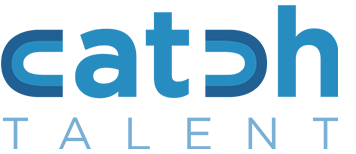Hiring in the post-pandemic economic recovery is a lot like buying a home in a highly desirable community. If you drag your feet, the home of your dreams will be off the market by the time you present an offer.
If you have ever wanted to hire someone, make a competitive offer, have had a candidate decline your offer for a better one, make multiple offers, or secure a counteroffer, then this post will offer you some valuable insights.
Last year, 6.7 million jobs went unfilled in the softest economy that we have experienced since the last recession. That statistic will increase in 2021, as organizations continue to gain confidence, return to business as usual, and implement remote workforce policies.
Having spent 24 years in the Technology Recruiting space, I can confidently say that the job market is as hot now as it was during Y2K or during the subsequent .com boom, and yet organizations still hire as if the market is soft. – Dan Coombs, Vice President of Catch Talent
Currently, we are in a seller’s market – there are more jobs needed than there are candidates available. This poses a unique problem to recruiters and companies alike, as all of the best tech professionals are gainfully employed and technically “off the market”.
The demand for top talent far outweighs the availability of qualified candidates and prospective job seekers have multiple competing opportunities at any given time. Candidates living in smaller markets, historically limited to local employers, are now gaining access to organizations that are hiring a virtual workforce throughout the US. – Dan Coombs
So how do you expedite your hiring process when there’s no available talent?
When you know you are about to have a job opening, it’s important to take a step back and look at your hiring process, plan, and goal.
- How many resumes are you going to screen before you conduct an interview?
- What’s the market average time to fill a position like the one you’re about to post?
- How long does it take your company to hire a tech professional?
- Are you going to actively or passively search for your ideal candidate?
- What’s your timeline between the first interview and an offer?
- Have you ever evaluated the number of initial interviews required to get to a hire?
- How many steps are in your hiring process?
- How many team members are involved in each step?
- What is your offer to hire ratio?
These are essential questions you need to look into in order to figure out if your hiring process is in need of an overhaul.
It’s also pertinent to note that time is NOT on your side when hiring. The longer you keep the door open, the more competition you’ll have and the harder it will be to secure the best candidate for the job. Ideally, you want to simplify your process down to three steps and two weeks in total duration from start to finish. This can be:
- Two in-person interviews, one mock call/project.
- One phone interview, one in-person interview, and a team interview.
In the end, people like to buy and not be sold. It’s your responsibility as the employer to build a compelling reason why a candidate should join your team. Be armed with competitive benefits, your employee value proposition, and an efficient hiring process, a solid onboarding plan, and a welcoming team.
Companies that are not forward-thinking, rigid in their approach to hiring, have a slow interview process, or are not building a compelling Employee Value Proposition will lose their competitive advantage and have to settle for the first available candidate vs. the best available candidate. – Dan Coombs
If you would like to talk with us about how Catch Talent can assist your company in compressing their hiring process, finding the best candidates for your open positions, or in exploring this topic further, reach out to Dan Coombs at dan.coombs@catchtalent.com or visit www.catchtalent.com



